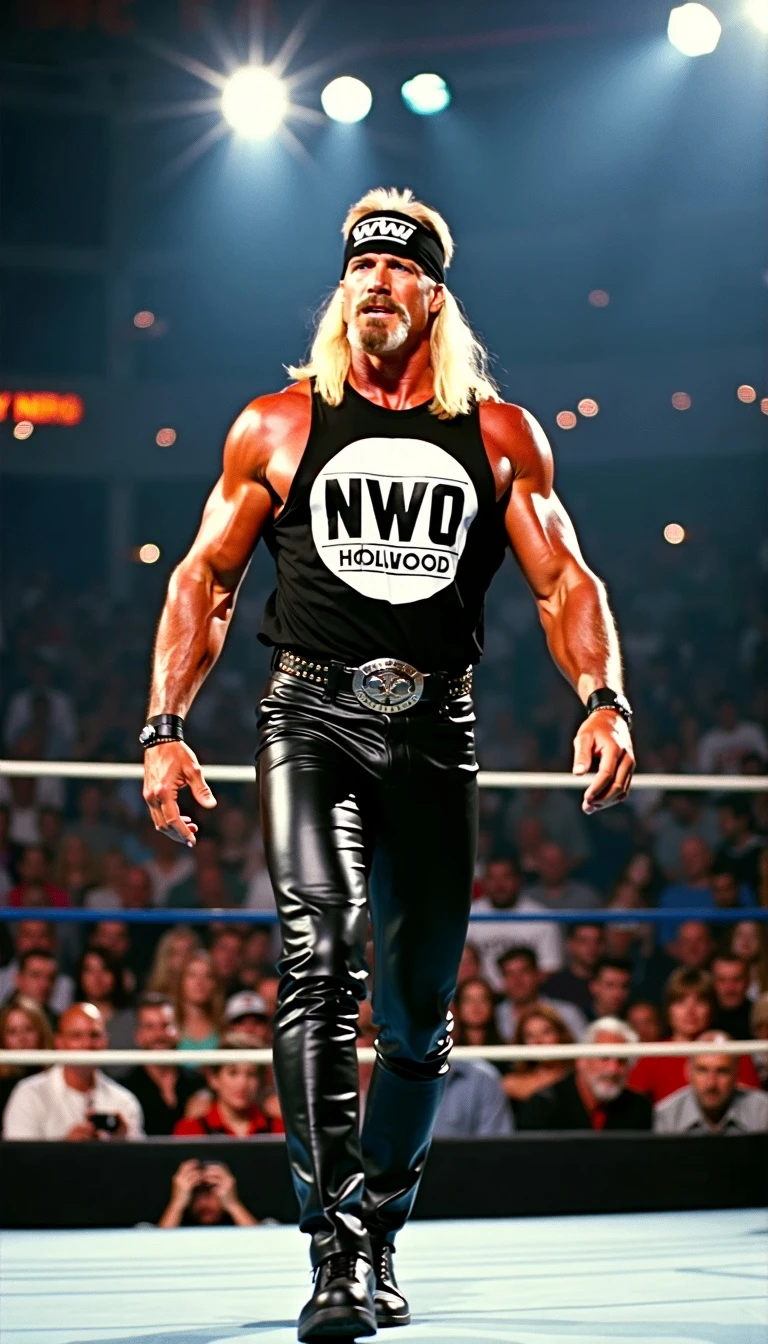The TV broadcast still of Hollywood Hulk Hogan on his way to the ring during WCW Nitro captures a striking moment. **Appearance:**- Hogan, in his Hollywood persona, sports his iconic black and white attire. His sleeveless shirt prominently features the "Hollywood" logo and a large, bold "NWO" on the back. The gear is complemented by black leather pants and a black bandana with his signature logo. **Pose and Expression:**- Hogan strides confidently toward the ring, his expression intense and focused. His muscles are prominently displayed, emphasizing his imposing physique and commanding presence. **Lighting and Background:**- The arena is brightly lit, with spotlights highlighting Hogan and casting dramatic shadows. The crowd in the background is a blur of excitement, their enthusiasm adding to the energy of the moment. **Overall Mood:**- The still exudes a sense of power and dominance, capturing Hollywood Hogan’s larger- than- life persona and the electrifying atmosphere of WCW Nitro














![/imagine prompt:dvd screengrab of 1976 low budget anime [Spider-Man] based on [Marvel Comics] animated by [Toei Animation] featuring scene of spiderman meeting lizardman face to face,](https://img.fluxpro.art/sig/width:300/quality:85/aHR0cHM6Ly9yMi5mbHV4cHJvLmFydC9jbTE4M3V3OHoxdWlmMTJzeHVlcGV5ZnRrLzAud2VicA==)








